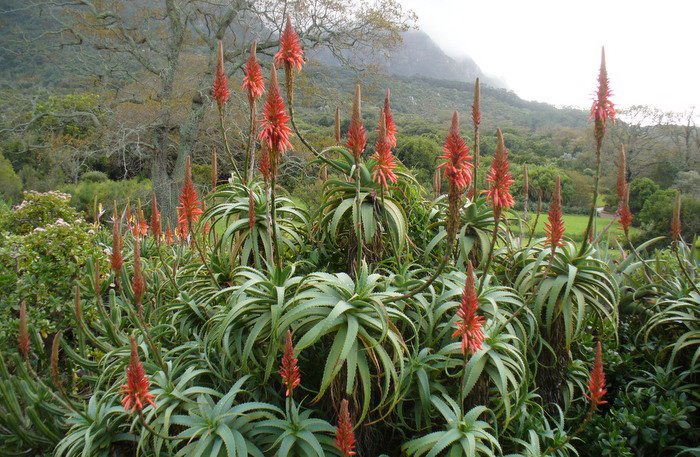Gardening: Design an aerie in Eden

PHUKET: In a previous article, I wrote about an extraordinary mountain top project in Cebu, in the Phillippines. My brief for this project was to suggest plants for such an environment. We started with an obvious choice: bromeliads.
Another very different kind of epiphyte (air plant) is the staghorn fern. Ferns traditionally grow in shade and need moisture – there are a few Boston ferns under the shelter of overhanging rocks in this site – but the fern I had in mind was the huge staghorn, or platycerium. These dramatic plants do best when attached to a tree trunk, where they can collect water and fragments of debris.
If most ferns are therefore unsuitable for our requirements, cacti are the bee’s knees. Desert plants – accustomed to full sun and equipped with shallow, wide root systems which can cope with habitats of low fertility – have the added ability to thrive on limited water resources, such as mist and dew.
They inhabit some of the driest places on earth and come in all shapes and sizes. While most are spiny, the epiphytic rhipsalis has narrow, dangling leaves and can be planted in cracks with some compost and draped over rocks or roots. Others – the globular ferocactus or the rosette-shaped crassula come to mind – form neat shapes, which would add character and variety to bare rock.
They are worth introducing to this aerie.
Other succulents include the genus of aloes, evergreen plants that grow either in rosettes or in spirals, and are usually sharp-toothed and lance-shaped. Red or yellow tubular flowers appear annually.
Popular because of their striking form and ability to tolerate poor soils, succulents are handsome and durable plants. For an example, A. arborescens grew on rocky outcrops near my house in southern Spain. I would have no hesitation in recommending it here.
Yuccas, already in evidence on the lower slopes, where there is enough dappled shade to support large clumps of ginger, again possess attractive lance-shaped leaves. Though not as statuary, they are hardy as the aloe in dry, exposed conditions and might well adapt to these conditions.
Y. filamentosa is the easiest variety to cultivate. It produces long, blue-green leaves from the center of which arise stems up to 10-feet tall, bearing masses of creamy flowers. Another yucca, gloriosa (Spanish dagger), comes in a variegated form.
Among other desert plants which need little maintenance, euphorbias and adeniums tend to be grown in containers in Phuket, but there is no reason why they should not flourish in this elevated fastness.
Euphorbias have vicious spikes – hence their nickname ‘crown of thorns’ – but there is also a small variety with a dense, bushy habit and masses of brilliant scarlet flowers.
Adeniums (desert roses) are shrubs that have gray, often bulbous trunks and prominent roots. Known in the Philippines by the bizarre name of ‘Bangkok calachuchi’, they can tolerate full sun and meager soil. The trumpet-shaped flowers come in white, pink or brilliant red.
It is essential to study the local flora to see which plants have already habituated to this often hostile environment. Bougainvilleas are one such shrub. They could be encouraged to climb into the existing banyan trees or over the crags. They have serpentine roots and bloom best in full sun.
Too much sun may in fact be an issue for the ground cover plant which does so splendidly in the established landscape below. There, it has covered the moist, shady slopes with a green carpet dotted with yellow, vetch-like flowers. Up here, at least in the most exposed situations, it looks less at home.
Maybe it is worth trying wedelia. With its golden, star–shaped flowers and rapid capacity to creep, wedelia will flourish in full sun. Another plant that can provide a bi-colored green and purple display is the spiderwort (rhoeo spathacea). Arranged in dense clumps or even singly, sundang hari should fare as well amid the high-rise rocks.
There will be losses and failures. But what an awe-inspiring project it is. Only a remarkable imagination could conceive such a synthesis of art and nature. As the man said: Nothing ventured, nothing gained.
If you have a question or a garden that you would like featured you can email Patrick at: drpaccampbell@gmail.com. Further information about this gardening series and Patrick’s other work can be accessed at: patrickaccampbell.wordpress.com
— Patrick Campbell
Latest Thailand News
Follow The Thaiger on Google News:


























